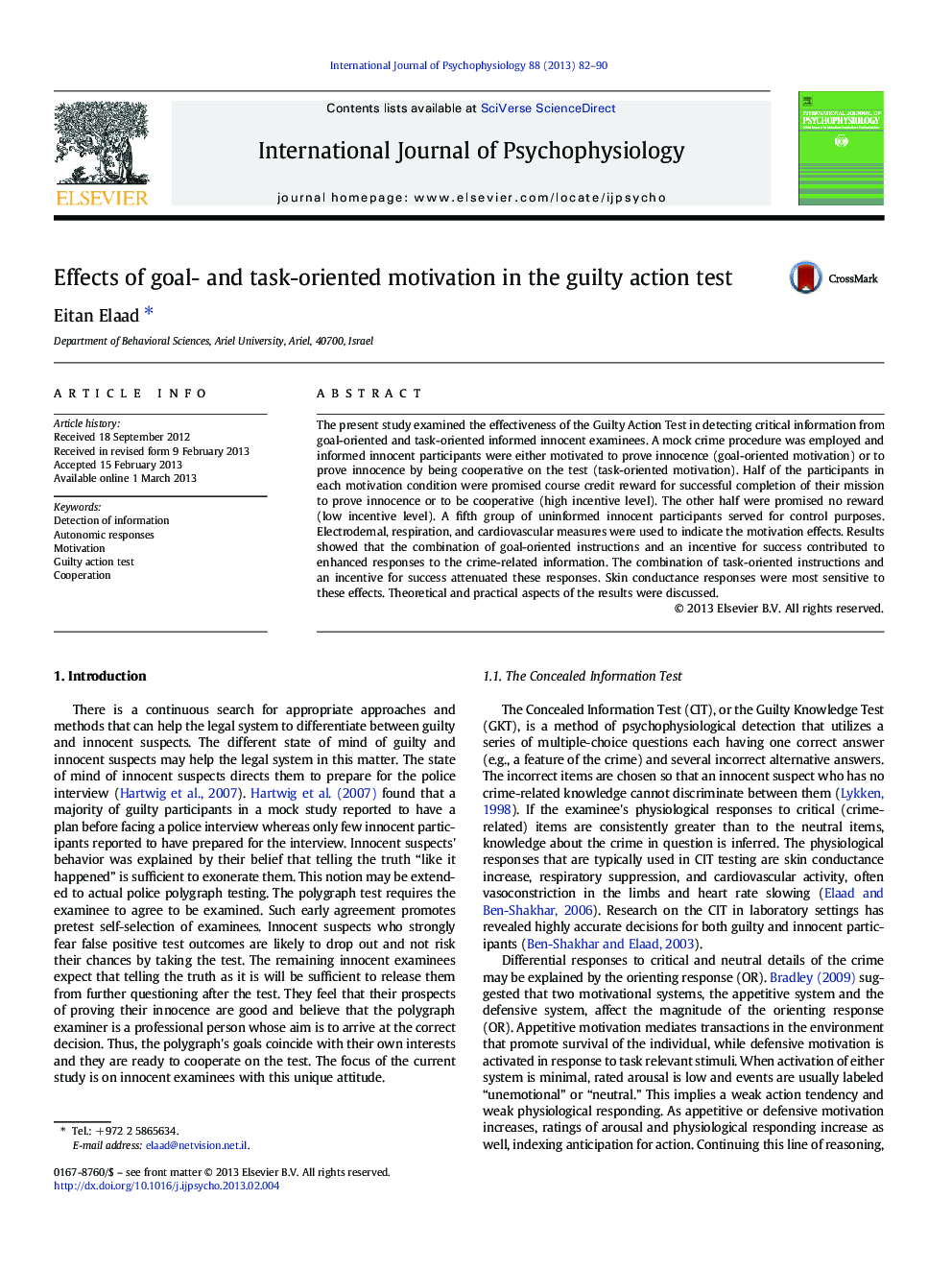| Article ID | Journal | Published Year | Pages | File Type |
|---|---|---|---|---|
| 930406 | International Journal of Psychophysiology | 2013 | 9 Pages |
•Goal-orientation produced larger responses than task-orientation.•Incentive for concealing information enhanced responding to critical items.•Incentive for cooperation on the test attenuated responding to critical items.
The present study examined the effectiveness of the Guilty Action Test in detecting critical information from goal-oriented and task-oriented informed innocent examinees. A mock crime procedure was employed and informed innocent participants were either motivated to prove innocence (goal-oriented motivation) or to prove innocence by being cooperative on the test (task-oriented motivation). Half of the participants in each motivation condition were promised course credit reward for successful completion of their mission to prove innocence or to be cooperative (high incentive level). The other half were promised no reward (low incentive level). A fifth group of uninformed innocent participants served for control purposes. Electrodemal, respiration, and cardiovascular measures were used to indicate the motivation effects. Results showed that the combination of goal-oriented instructions and an incentive for success contributed to enhanced responses to the crime-related information. The combination of task-oriented instructions and an incentive for success attenuated these responses. Skin conductance responses were most sensitive to these effects. Theoretical and practical aspects of the results were discussed.
